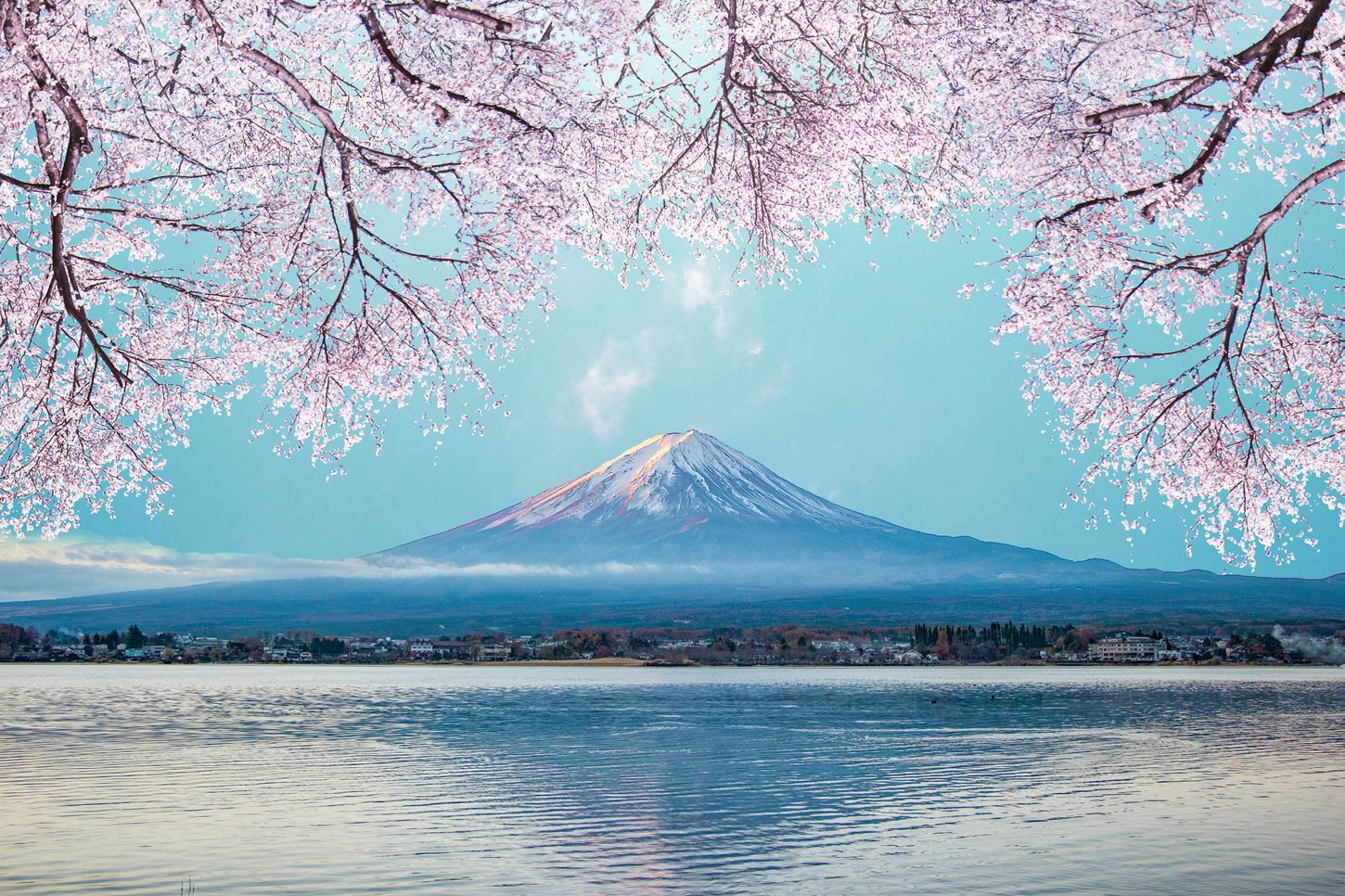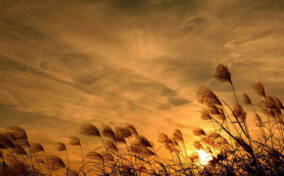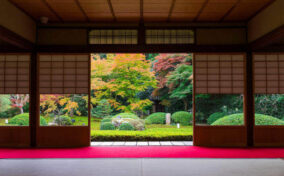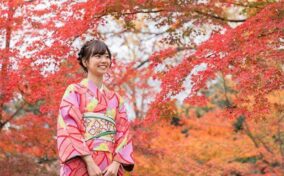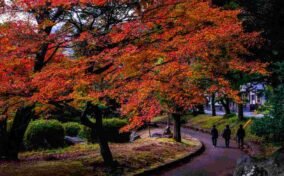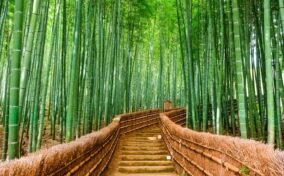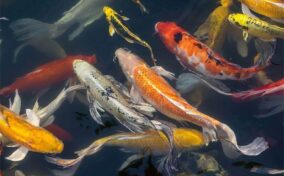Japanese people nurture their culture with the four seasons and enjoy the natural scenery of each season.
There is a clear seasonal change in Japan. Summer is very hot, but the heat does not last forever. The temperature gradually falls and the leaves on the trees turn red and yellow. Eventually, a tough winter will follow. People withstand the cold and wait for warm spring to come. This seasonal change has had a big impact on the lives and culture of the Japanese people. Each situation varies depending on the area.
On this page, I will talk about the four seasons and life in Japan.
On this website, we have many articles about the weather and seasonal clothing in Japan. We have prepared this page so that you can get a bird’s eye view of them all in one page. If you like, you can also use this page.
Table of Contents
About seasonal change in Japan

Mt Fuji with snow in winter at lake Kawaguchiko Japan -Shutterstock
In winter, there is less traffic at tourist spots, giving individuals who brave the cold a personal encounter of the famous areas of Japan. In Japan, January (following the New Year’s vacation) marks a time to hit the ski slopes. February marks the beginning of the season in Japan. Above ground, on the northern and central islands of Japan, Feb is the coldest month of Japan. March is a great time to visit Japan thanks to heating temperatures and the beginning of the anticipated cherry blossom season. By March, areas of Japan will start to see the blooming of cherry blossoms which bring hanami celebrations. This is a very festive and cheerful time to be in Japan and a terrific way to experience one of that the country’s most social traditions.
April’s rising temperatures will bring the end of Japan’s skiing season. If you are looking to enjoy beautiful flowers but can’t make it to Japan during cherry blossom season then I recommend you come in May. You will be met with white, pink, and purple hues from a number of Japan’s other flowers, like azalea, wisteria, and iris. In May, there is a week of compensatory holidays when most of Japan takes off work and many companies are shut down. The beginning of typhoon season kicks off some of Japan’s rainiest weeks. Music fans should take into account that Japan’s largest music festival, Fuji Rock Festival, kicks off that the last weekend in July at the Naeba Ski Resort in Yuzawa, Niigata. It features both national and international artists.
The Japanese vacation of Obon lands in the center of August and is an enjoyable and vibrant time to visit Japan. August is also Japan’s hottest month no matter which island you find yourself on. The highs can differ greatly, reaching into the 90’s in Okinawa and low 70’s in Hokkaido.
October and November are a magnificent time to visit Japan. Falling temperatures start in Hokkaido during October and the warm colors of autumn start to gradually push their way down the islands of central Japan. The fall landscape and temperature make it a wonderful time to stop by the deer
in Nara too.
Shogatsu in Winter
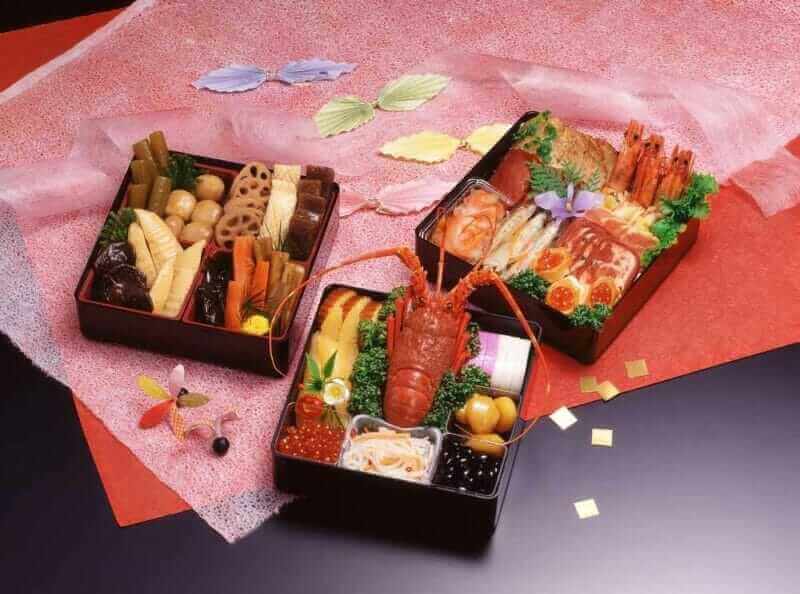
Japanese traditional New Year dish = Shutterstock
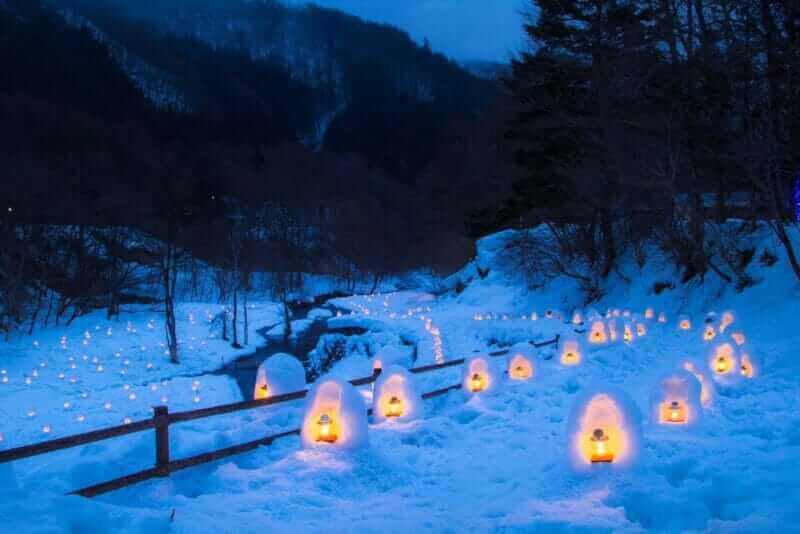
The Yunishigawa Kamakura Festival is held from late January to mid March = Shutterstock
The most important holiday celebration in Japan is New Year’s, or “Shogatsu”. It is a time of year when many organizations are closed and most people have vacation. The reason behind this is that Shogatsu is a time customary for families to gather. Initially, Shogatsu was celebrated by the Japanese based on the lunar calendar. When Japan adopted the Gregorian calendar and they started celebrating the New Year on January first, this changed in 1873 during the Meiji period. There are customs that continue to be particular to this day. The New Year’s first shrine visit is so important that the Japanese have a word for it: Hatsumode.
As they describe the receiver’s luck in the coming year, good fortunes given at shrines are kept. Probably the most symbolic decoration of Shogatsu is the kadomatsu. The decoration of the New Year is placed to welcome the Shinto deities. Kadomatsu is made with sprigs of bamboo, pine and ume. Much like many other celebrations, the food plays an important role. The food prepared isn’t just tasty but each has a certain reason behind being eaten. Osechi Ryori identifies a range of prepared Japanese foods that is shared among members of the family and served in boxes. Each one of the meals in osechi holds auspicious symbolism, such as long-life, wealth, happiness, and others.
The pounded, sticky rice cakes known as mochi are just one of the main foods of the Japanese New Year. Another standard New Year’s meals is zoni, a soup created with mochi and a stock of either dashi or miso, depending upon the particular region. Even in the cold, it isn’t uncommon to see kids out and about around the New Year flying kites. Similar to the Western tradition of sending Christmas cards, the Japanese send a seasonal greeting card for the New Year. From the middle of December to January 3rd it is the busiest season for post offices in Japan.
Cards frequently feature the year’s Chinese zodiac animal, other New Year’s motifs, or popular
characters. Children in Japan have yet another reason to enjoy New Year’s celebrations: a present known as Otoshidama. This distinctive custom involves kids receiving money in a special envelope called Pochi bukuro from their adult relatives. Frequently adorned out of the zodiac animal of the year, these envelopes can be simple and elegant or cute and whimsical.
Hanami in Spring
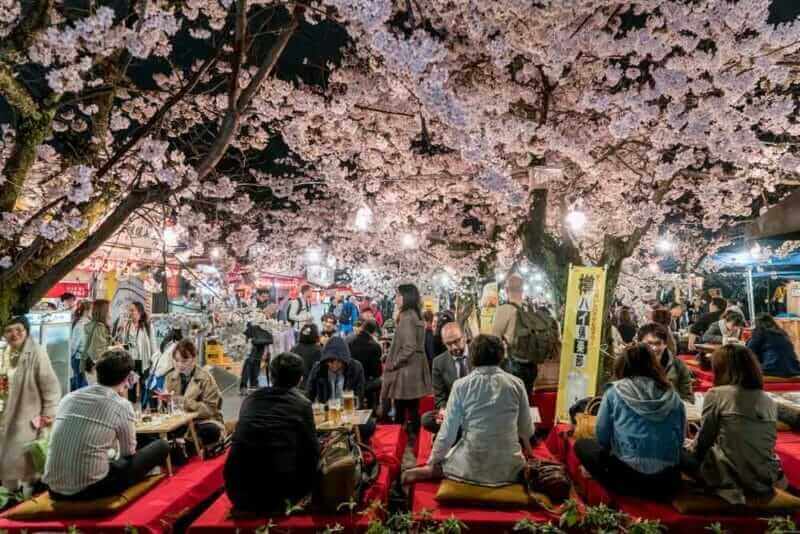
Japan crowds enjoy the spring cherry blossoms in Kyoto by partaking in seasonal night Hanami festivals in Maruyama Park at Kyoto, Japan. = Shutterstock
Hanami season in March and April is, for many Japanese, the best time of year. That is when the cherry blossom trees come in to bloom for between 7 and 10 days and people hold parties to see them. The blooming of cherry blossoms heralds the end of a winter and the start of a brand-new fiscal and school year, so hanami is like a party. There are school graduation ceremonies, deadlines, government ransports and then in April, the flowers come like a breath of fresh air. The beauty of the blossoms is emblematic to the Japanese. The blooming of cherry blossoms was initially a religious rite and forecasted the harvest to come.
Another food, sakura mochi, is a rice cake filled with red bean paste and wrapped in salt. Sakura, or cherry blossoms, have captured the hearts of the Japanese people and can be seen in everyday life. There is a bank called Sakura Bank and people even incorporate the flowers personality by naming their children after them. The tree pattern can even be found on 100 yen coins. Cherry blossoms can be shown to millions throughout the media. There are sakura predictions, or maps of pink dots, shown on maps of Japan on TV and in the daily newspapers.
A sort of “Sakura fever” grips the country for the length of the fragile blossom’s life. Some fanatics flock from one end of the nation to the other to locate the perfect show of flowers and the ultimate hanami. These cherry blossom groupies can follow the season north till the final petals have fallen, withered and disappeared. Some groups send out scouts ahead of their celebration to secure the very best spots in the park. This is similar to the way people reserve the best sun loungers by a hotel pool. If you do visit Japan from March to April, try to find the very best places to go for a hanami while you’re there.
A few steps from Ueno Station there are more than a thousand cherry trees in Ueno Park. They are lined across the street from the Saigo statue to the National Museum and Shinobazu Pond. East of Asakusa, across the Sumida River, Sumida Park extends for about one kilometer along either side of the river. This park also features hundreds of cherry trees. See a list of the very best cherry blossom viewing spots in Tokyo. Downtown Maruyama Park and also nearby Yasaka Shrine are Kyoto’s most famous hanami places along with Hirano Jinja from northwest Kyoto. See a list of the very best cherry blossom viewing spots in Kyoto.
Obon in Summer
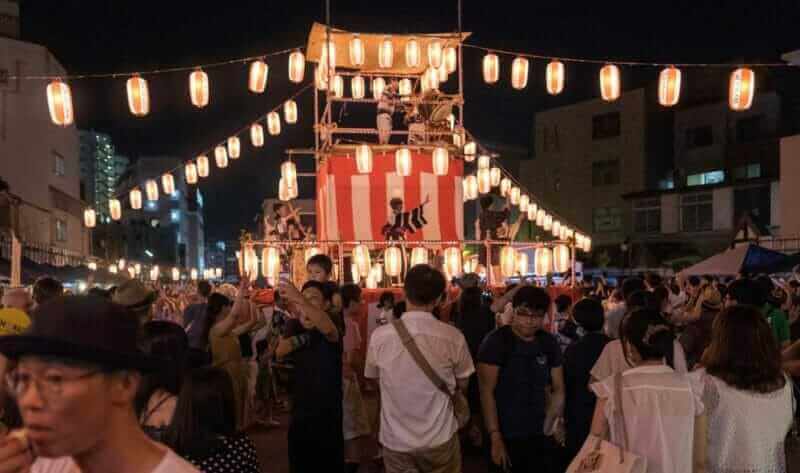
Crowd of people at the Bon Odori celebration in Shimokitazawa neighborhood at night. = Shutterstock
Obon is a Buddhist vacation that honors the spirits of ancestors returning. It’s summer vacation and folks return to their hometowns to visit the tombs of their relatives. Graves are cleaned and individuals pray to their ancestors. It’s a time to remember departed relatives. It’s believed that the spirits of our ancestors return every year. Outside of Japan, Obon is the most important Japanese Holiday. It’s been spread all around the world through Japanese immigrants. You will find big festivals in several locations in Asia, Canada, South America and The U.S.
Ancestor spirits depart on a night marked with fire. Obon is either July 13th to 15th or August 13th to 15th depending upon the region of Japan. This boils down to the distinction between the lunar calendar and the new calendar. In many cases, people end up observing both since they have family in different parts of the country. The two Obon periods are the busiest and most expensive times. Traffic jams would be the rule not the exception all over Japan.
Momijigari in Autumn
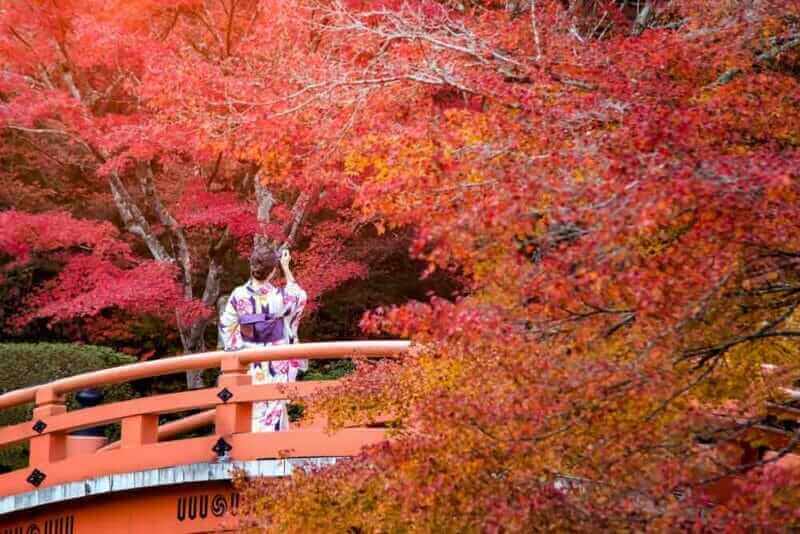
Young women wearing traditional Japanese Kimono at Daigo-ji temple with colorful maple trees in autumn, Famous temple in autumn color leaves and cherry blossom in spring, Kyoto, Japan. = Shutterstock
As seasonally themed Japanese celebrations go, the cherry blossom viewing festivals may get all the attention, but the centuries old autumnal tradition of momiji gari, literally “Red leaf hunting”, remains one of Japan’s best kept secrets. As far as the best places to go, for most Japanese, this annual pastime is merely a saunter through local forest paths in search of the ideal photograph or a scenic spot to sit. The blush of Gingko, maple and cherry trees, weave their way across the old city, intensifying the majesty of temples and Kyoto’s palaces. For those committed to the gari, this activity is about finding the landscapes that are best of which Kyoto and its neighboring areas has to offer.
The serene stillness of the temple is visible in its long stone gardens, combed by the monks to be able to seem like frozen waves, and also steep hillside peaks, overlooking the complex, which act as a windbreak for its tranquil trees and craggy pond. Those calm in mind will appreciate the beauty of watching a crispy red leaf slowly floating into a groove in the stone garden. Leaf hunters searching for something should cross the river. Although they grow all around the world, here you will find trees with howling macaques who swing through. The temple grounds became the last resting place for those souls without a penny, kith, or kin.
Daigo-ji sometimes gets overshadowed by Kyoto’s sixteen other UNESCO World Heritage Sites but the temple’s name, which translates to “Creme de la creme”, should remind red leaf hunters not to pass it by. This thousand year old temple is famous for the five story pagoda, lush sprawling gardens, and calm pond. The latter always becomes particularly picturesque in autumn, when the maple branches drape on the water, mirroring themselves on the surface. The park entrance is a good 90 minutes or so out of Kyoto via public transit and it is another hour of pleasant hikes to reach the park’s spectacular waterfall.
The gradual climbing trail is dotted with bucolic shrubs offering red leaf hunters spots to rest,
Japanese cuisine, and more importantly, a wide range of maple sweets. Minoh is known for the deep fried maple leaves and one would be remiss not to grab a bag for sustenance while strolling. At the trails end, the waterfall erupts out of a cliff face covered in fall foliage. The rest of this park, with its divergent paths, stays sparse with hikers through the year. It may take the better part of 2 hours to travel out of Kyoto to the mountain hiking trail. Once there, this park should be hiked at a casual pace, taking over 3 hours to finish.
Christmas in Winter
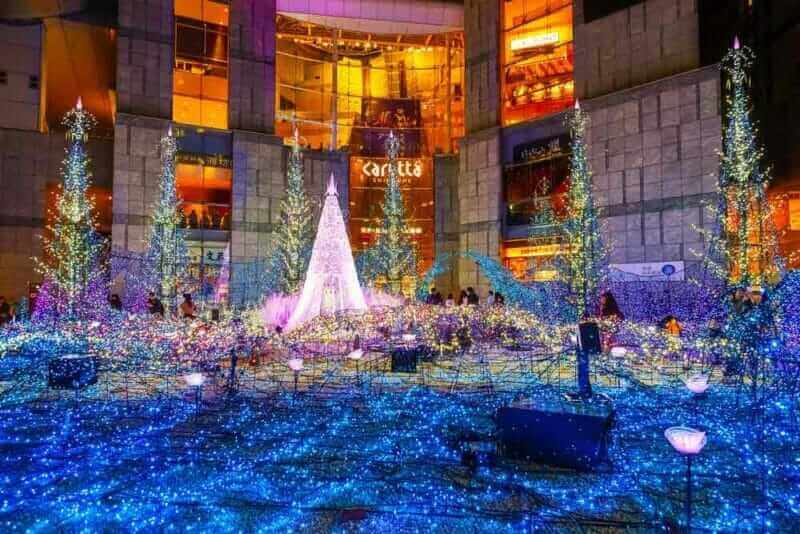
Illuminations light up at at Caretta shopping mall in Shiodome district, Odaiba area. The illuminations’ prepared for the forth coming Christmas Eve – Shutterstock
Christmas in Japan is celebrated very differently from countries with large populations of Christians. Very few people are estimated to be Christian, with the majority of Japanese being tolerant of all faiths: Buddhism, Christianity, Shinto, etc. The Japanese are wonderful fans of parties and festivals. Although December 23rd, the emperor’s birthday, is a vacation day, December 25th is not in Japan. Even though it isn’t an official holiday the Japanese have a tendency to celebrate Christmas, particularly in a commercial way. Eating a Christmas cake on Christmas eve, purchased by the father in a household on his way home is not uncommon.
Shops all over reduce their prices on various Christmas cakes to sell out by the 26th. As a result of the power of marketing, recently Christmas chicken dinner became popular from Kentucky Fried Chicken. Most Japanese people make bookings for their Christmas Chicken in advance. Due to KFC’s brilliant marketing campaign most Japanese people think westerners celebrate Christmas with a poultry dinner instead of ham or turkey.
Christmas Eve has been hyped by the media as being a time for intimate miracles. Due to this, extending and invitation to a woman to be together on Christmas Eve has very deep, intimate implications. Christmas gifts are exchanged between individuals with romantic commitments in addition to close friends. The presents have a tendency to be cute presents and frequently include Teddy Bears, flowers, scarves, and rings along with other jewelry. Christmas gifts have a tendency to be things that are cute and sometimes slightly expensive due to the connection to the individual that they’re given to. More obligatory year end gifts are given during the season as well to individuals who’ve done you a favor throughout the year. In contrast to Christmas gifts, they’re given between companies, to bosses, to teachers, and household friends.
These presents are referred to as Oseibo and are usually things that are perishable or that wear out rapidly. This is because the cost can readily be checked due to the system of “on and giri”. These presents are usually bought at department shops so the receiver can check the purchase price and return something of similar value. The winter holiday season also includes end of the year parties.
Thank you for reading to the end.
The season of Japan is always changing. For this reason, in the heart of the Japanese people, the idea that things are all changed and ephemeral is rooted. Also in the undercurrent of Japanese culture, there is a way of thinking that things are always changing. If you are interested in this, please also read the next article. Please click on the picture below.
Now, let’s plan to make your vacation in Japan the best experience ever!
